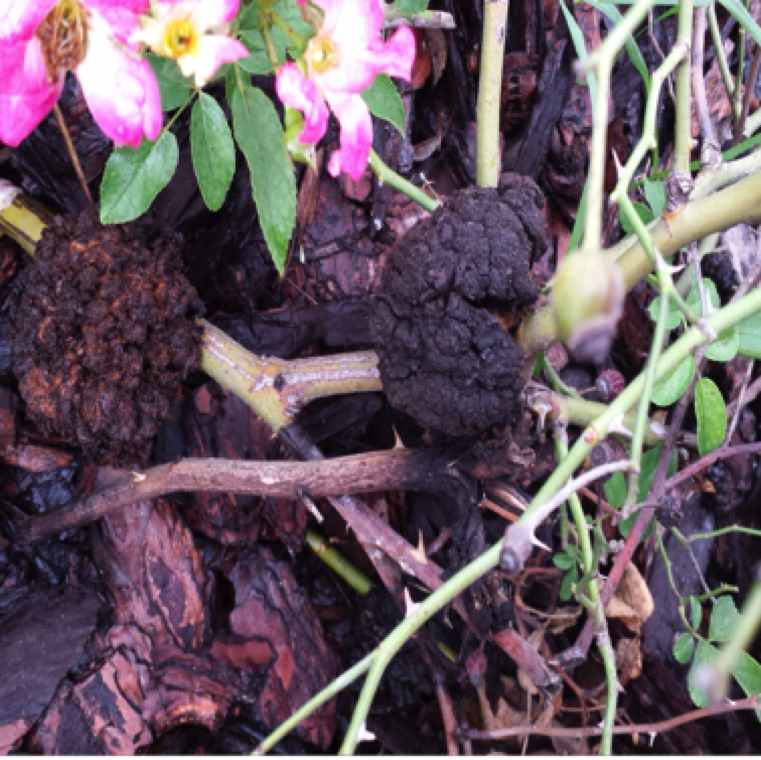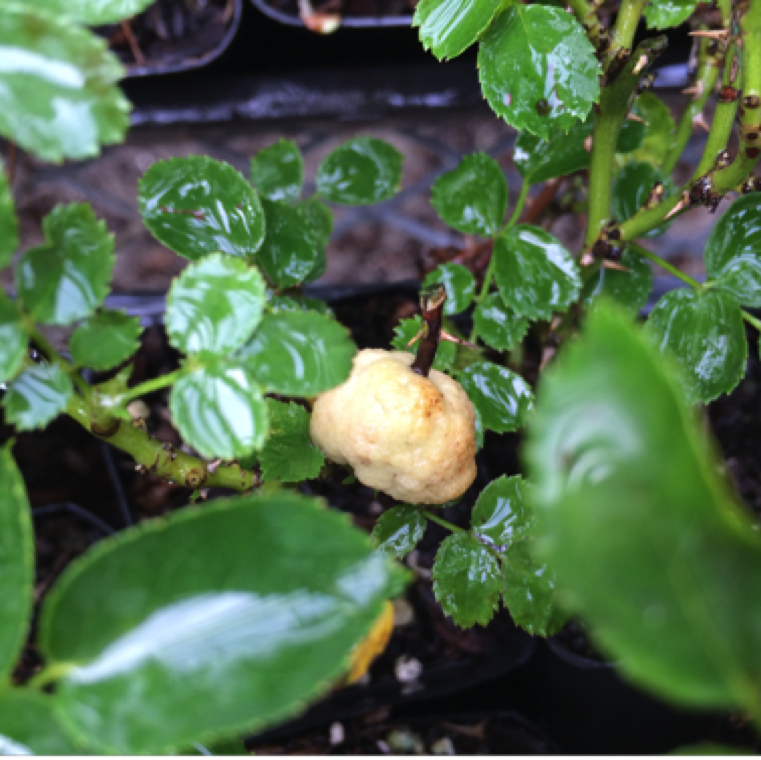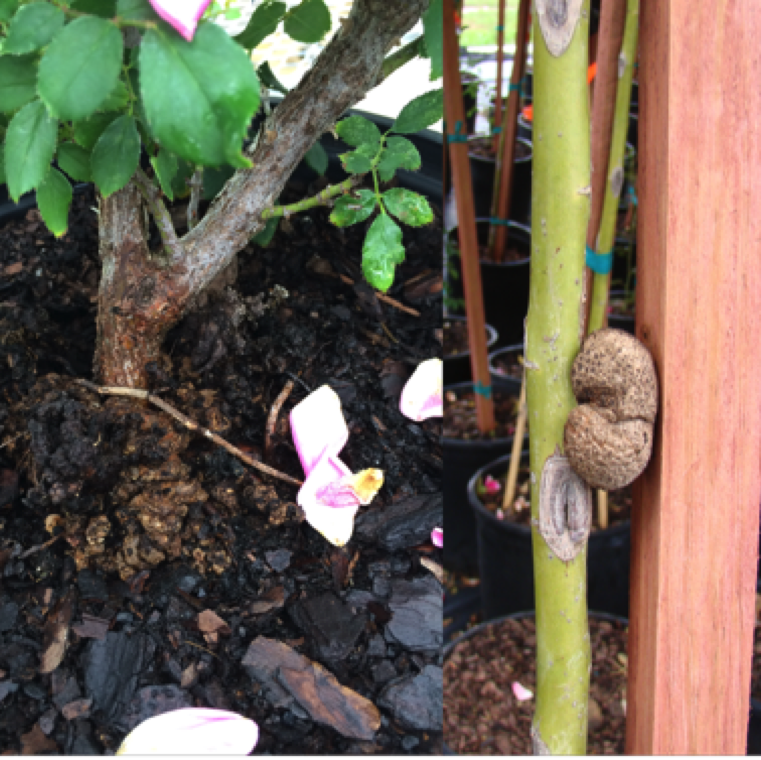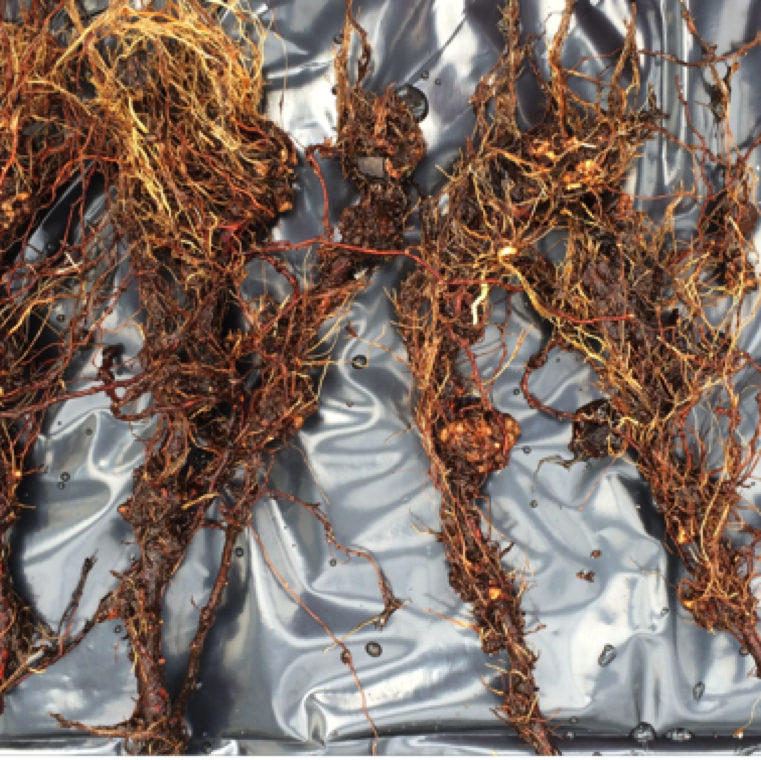


The bacterium enters the plant through wounds made during grafting, planting, or pruning. Often plants are infected in the nursery, and the disease develops later, after planting in the garden.

Symptoms are a gradual decline in plant health, often associated with the presence of spherical, woody growths at the crown or on stems. Initially, galls are white/cream color and turns brown/black later.
CROWN GALL
Bacterial causal agent: Agrobacterium tumefaciens
Rose diseases

